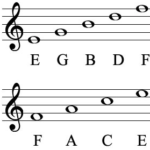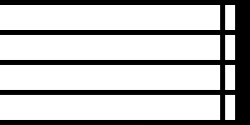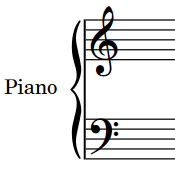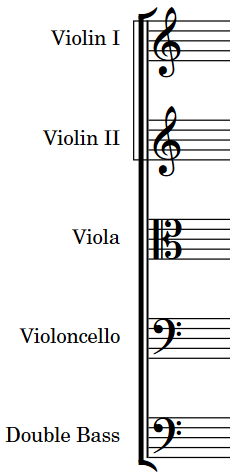News
Musical Symbols – Lines
“Let’s start at the very beginningA very good place to startWhen you read, you begin with A-B-CWhen you sing, you begin with Do-Re-Mi” (Julie Andrews, Sound of Music)
Here’s something for everyone who wishes to learn how to understand, read, or write Music. In learning Music, we have to consider the marks and symbols in musical notation which indicates various aspects of how a music piece should be performed whether you are a singer, or an instrument player like piano, guitar, drums, etc.
Let us start by understanding the basics, like, where, or how to put our Do-Re-Mi. And without further ado, let us start with the “Lines”.
Here are some common uses of lines in musical symbols:
Staff Lines:
The staff (or Stave) is used to indicate pitch (highness or lowness of sounds) which consists of five horizontal lines and four spaces between them. Notes and other musical symbols are placed on these lines and spaces to represent pitch. The lines and spaces of the staff represent different pitches. Moving vertically upward, the letter names (A, B, C, D, E, F, G) proceed to alternating the lines and spaces representing ascending pitches. The pattern (A-G) repeats continually and the note above “G” is always an “A”.

(When I was in grade school, my Music teacher taught us a way to remember this easily, and I want to share it with you too)
Lines: Every Good Boy Does Fine
Space: F A C E
Bar Lines:
Bar lines (or barlines) are vertical lines used to divide or separate the staff into measures (bars), indicating the rhythmic and structural organization of the music. Each measure typically contains a specific number of beats according to the time signature.
Double Bar Lines:
Double Barline refers to two vertical thin lines, both the width of a single barline. It is used to indicate significant changes in the music such as a new musical section, a new key or time signature, or a change in tempo.
Triple Bar Lines:
Triple Bar Lines are used to demarcate structural units that are larger than a single bar.
Dotted Bar lines:
Sometimes called dashed bar lines, these bar lines are used to subdivide the bars to make the complex time signatures easier to read. It is also used to differentiate editorial bar lines from the ones that are originally in the manuscript.
Double Bold Bar Lines:
Double Bold Bar Lines are used to indicate the conclusion of a movement or an entire composition. Sometimes, it is also called the Final bar lines.
Tick bar lines:
It is a short line that is only on the top line of the staff. It is used when notating a plain song which denotes a breath or a short gap between phrases, or other music with an unusual metrical structure.
Short Bar lines:
Short Bar lines are used when notating a plainsong, in which the context denotes a “longer gap between phrases than a tick bar line”. It is placed either in the middle of the staff or at the top of the staff.

Thick Bar Line:
Thick bar lines are used to give a greater visual impact
Ledger Lines:
Ledger lines are additional lines used to extend the range of the staff beyond its five lines and four spaces. They are used to indicate pitches that are above or below the staff. Multiple ledger lines can be used.
Tie Lines:
Tie lines connect two notes of the same pitch, indicating that they should be played as a single, sustained note. This allows for notes that extend beyond the duration of a single measure.
Slur Lines:
Slur lines indicate that a group of notes should be played smoothly and connected without any separation between them. They are often used to indicate phrases or legato passages.
Repeats:
Repeat lines, such as the double bar line with two dots, indicate sections of music that should be repeated. We will tackle more about the Repeats soon!
Brace:
This is a curly or wavy line that joins multiple staves that belong to the same instrument. If necessary, it can extend to three or more staves.
Bracket:
It is a thick black line with the width of a beam and often has winged ends that point inwards towards the score that groups stave together according to instrument family.
These are just a few examples of how lines are used in musical notation to convey different aspects of the music to performers.
Please do follow us to keep you posted. In the meantime, you can click here if you want to learn How to Read Drum Sheet
Hope to see you next time for more, until the next lesson!















